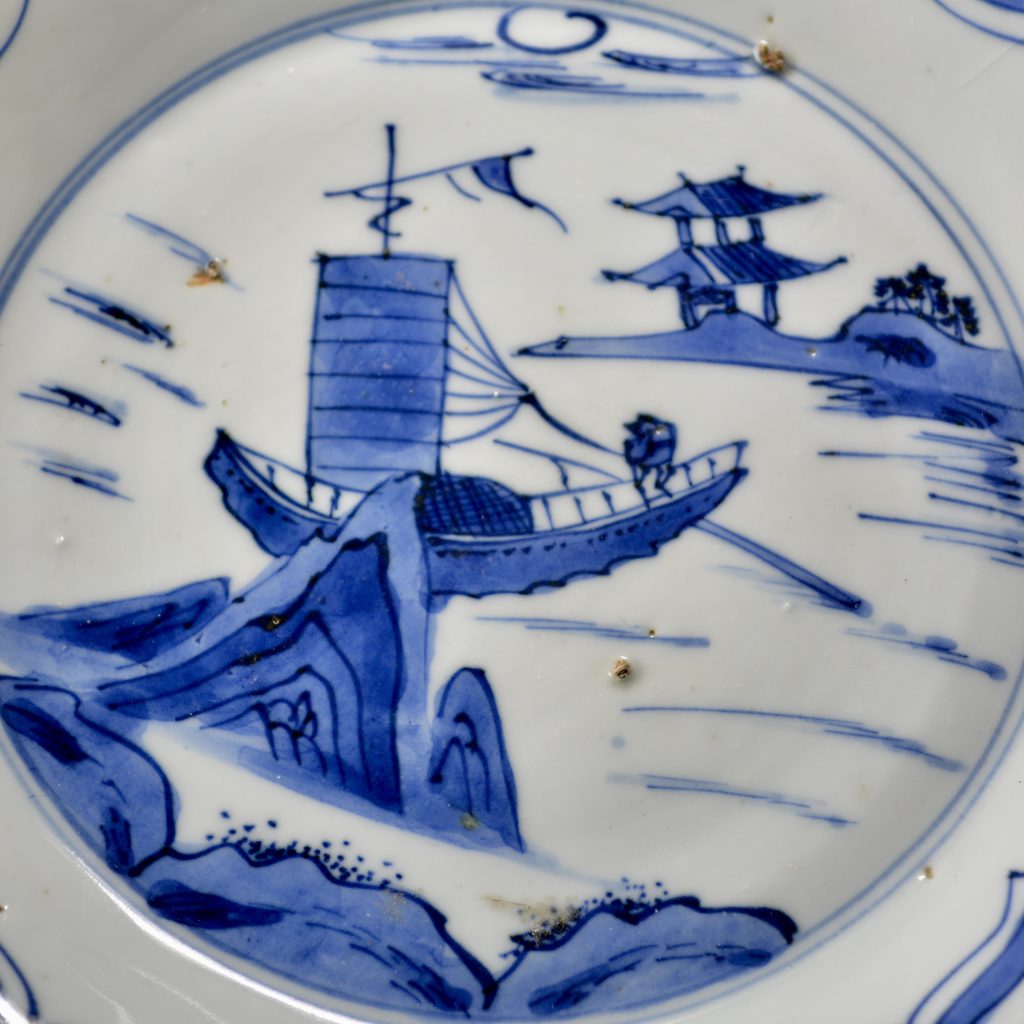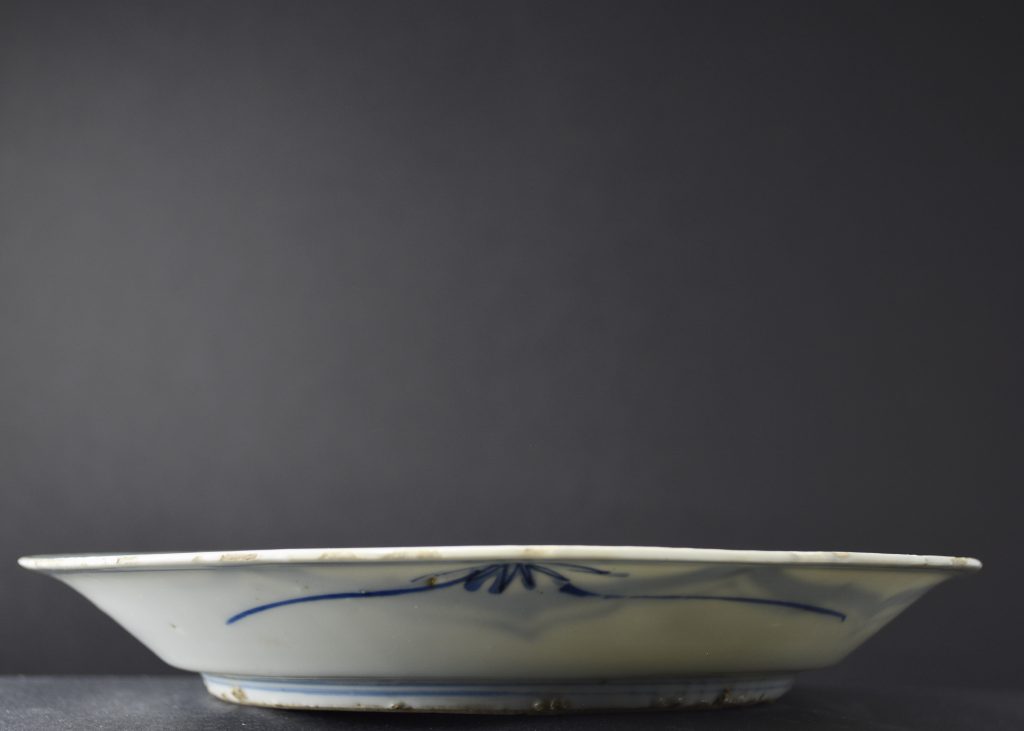A Ming Blue and White Porcelain Dish, Tianqi (1621-1627) or Chongzhen (1627-1644) dating to c.1630. This Transitional porcelain dish was made for the Japanese market and would have been used to serve food during the Tea Ceremony. It depicts a Chinese vessel navigating its way around jagged rocks, in the distance is a promontory with a two story building at the waters’ edge.
SOLD











